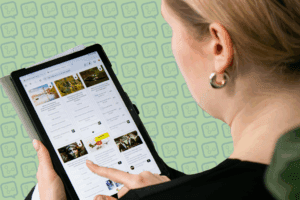Content Repurposing Strategies: How to Maximize Your Content’s Reach and Impact

In the fast-paced world of digital content creation, one of the biggest challenges for creators is maintaining a consistent stream of fresh and engaging content across multiple platforms. However, constantly churning out new content can be time-consuming and resource-intensive. That’s where content repurposing comes in. Content repurposing involves adapting existing content for use across different platforms and formats, maximizing its reach and impact while minimizing the time and effort required. In this blog post, we’ll explore the art of content repurposing and sharing strategies for leveraging it effectively to extend the lifespan of your content and reach new audiences.
Why Repurpose Content?
Repurposing content offers several benefits for content creators:
- Maximizing Reach: By repurposing content for different platforms and formats, you can reach a broader audience and attract new followers who may have yet to discover your content.
- Increasing Engagement: Repurposing content allows you to reinforce key messages and ideas across multiple touchpoints, increasing engagement and driving deeper connections with your audience.
- Saving Time and Resources: Rather than starting from scratch every time you create content, repurposing allows you to leverage existing assets and streamline your content creation process, saving time and resources.
Strategies for Content Repurposing
- Start with Evergreen Content: Identify evergreen content that remains relevant and valuable to your audience over time. Evergreen content forms the foundation of your content library and serves as a versatile source material for repurposing.
- Adapt Content for Different Platforms: Tailor your content to suit each platform’s unique characteristics and audience preferences. For example, repurpose a blog post into a series of social media posts, a podcast episode, or a video tutorial, optimizing the format and style for the platform’s audience and functionality.
- Repurpose Across Formats: Experiment with repurposing content across different formats to appeal to various learning styles and preferences. For example, transform a written blog post into an infographic, a slide deck, or an audio clip, providing multiple entry points for your audience to engage with the content.
- Update and Refresh Older Content: Revisit older content periodically and update it with new information, insights, or perspectives. Refreshing existing content keeps it relevant and up-to-date and provides opportunities for repurposing and reintroducing it to your audience.
- Create Content Series and Themes: Organize your content into thematic series or collections around specific topics or themes. Repurpose individual pieces of content within the series, such as blog posts, videos, or interviews, to explore different aspects of the overarching theme and create a cohesive narrative arc.
- Syndicate and Cross-Promote Content: Syndicate your content across multiple platforms and channels to maximize its exposure and reach. Cross-promote repurposed content by sharing links, snippets, or teasers on social media, email newsletters, and other distribution channels to drive traffic and engagement.
- Reuse Visual Assets: Leverage visual assets such as images, graphics, and videos across multiple pieces of content. Repurpose visual elements from blog posts, presentations, or videos to create social media posts, infographics, or visual quotes, reinforcing key messages and enhancing visual appeal.
Conclusion
Content repurposing is a valuable strategy for maximizing the reach and impact of your content while optimizing your time and resources. By repurposing existing content for different platforms, formats, and audiences, you can extend the lifespan of your content, attract new followers, and deepen engagement with your audience. Experiment with different repurposing strategies, adapt content to suit the unique characteristics of each platform and keep your content fresh and relevant by updating and refreshing older content regularly. Embrace the art of content repurposing and watch as your content resonates with new audiences and drives meaningful results across the digital landscape.





